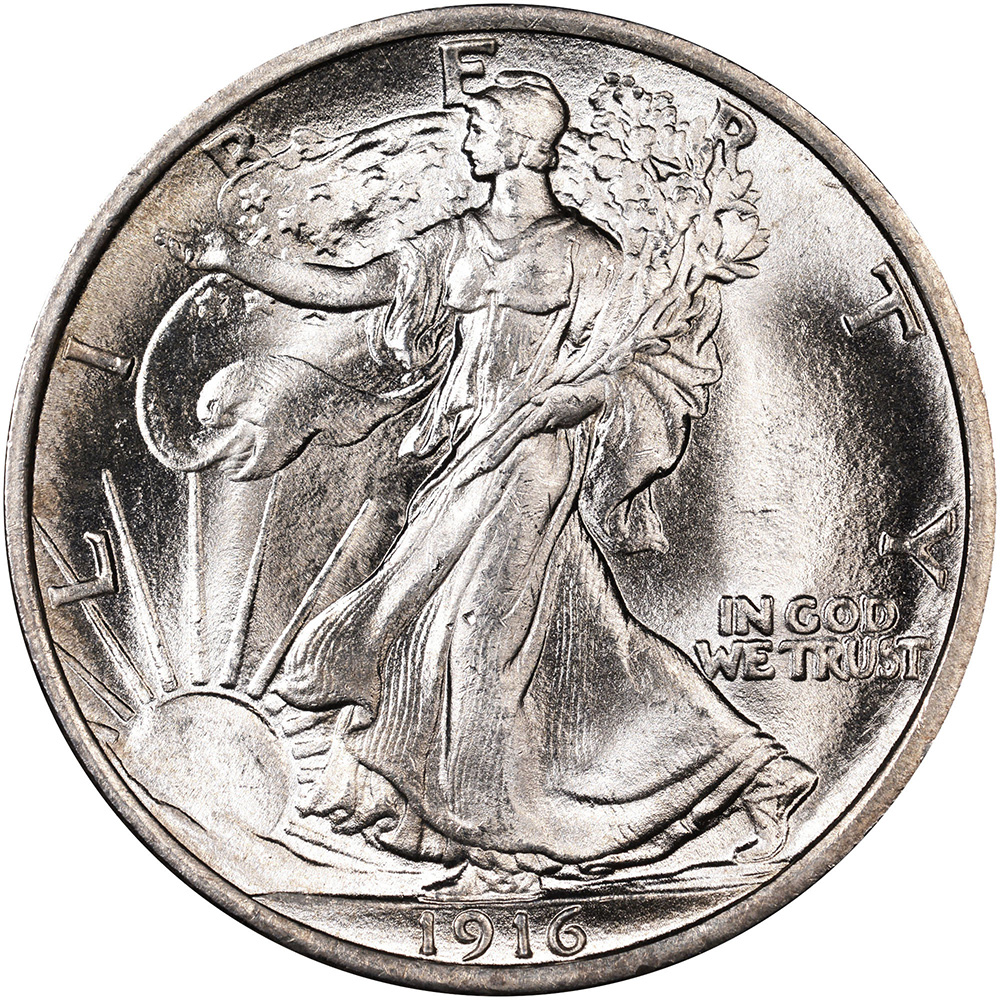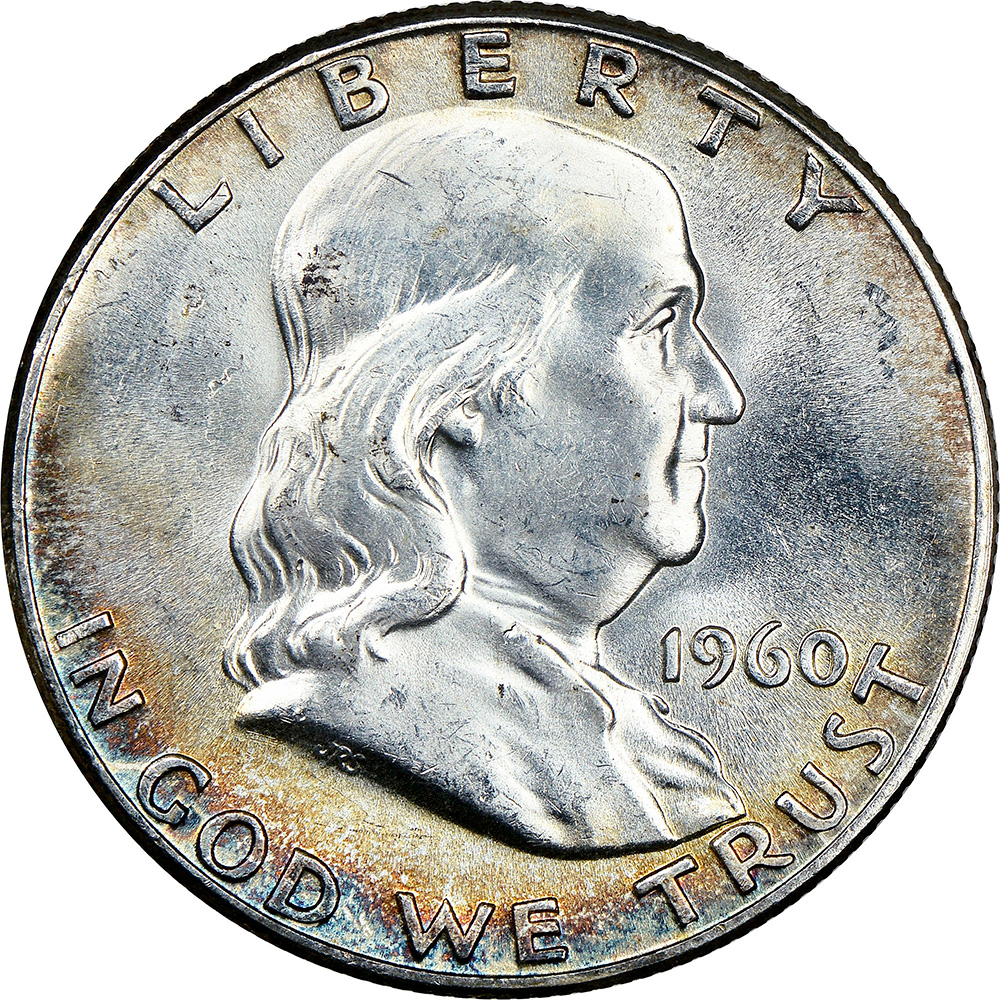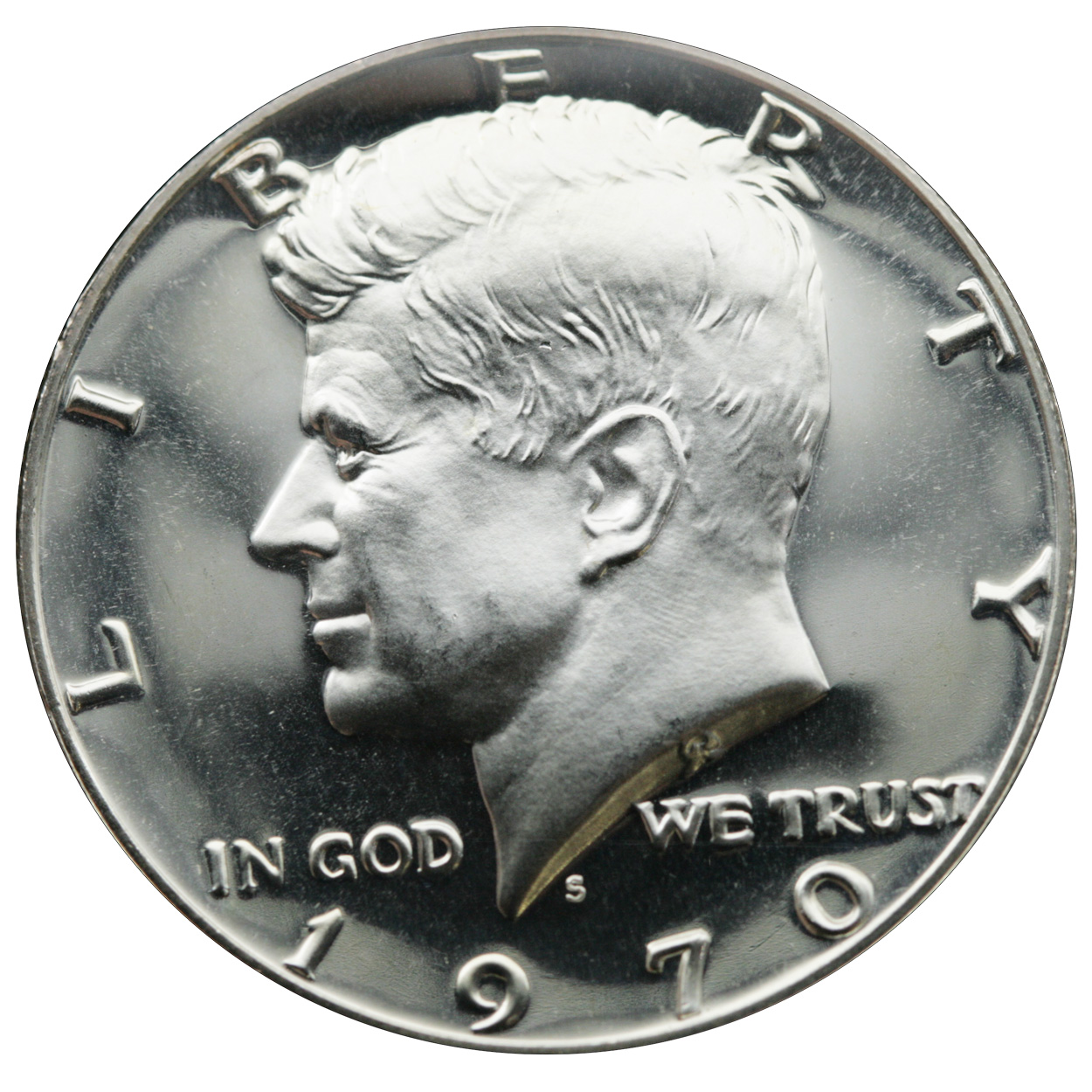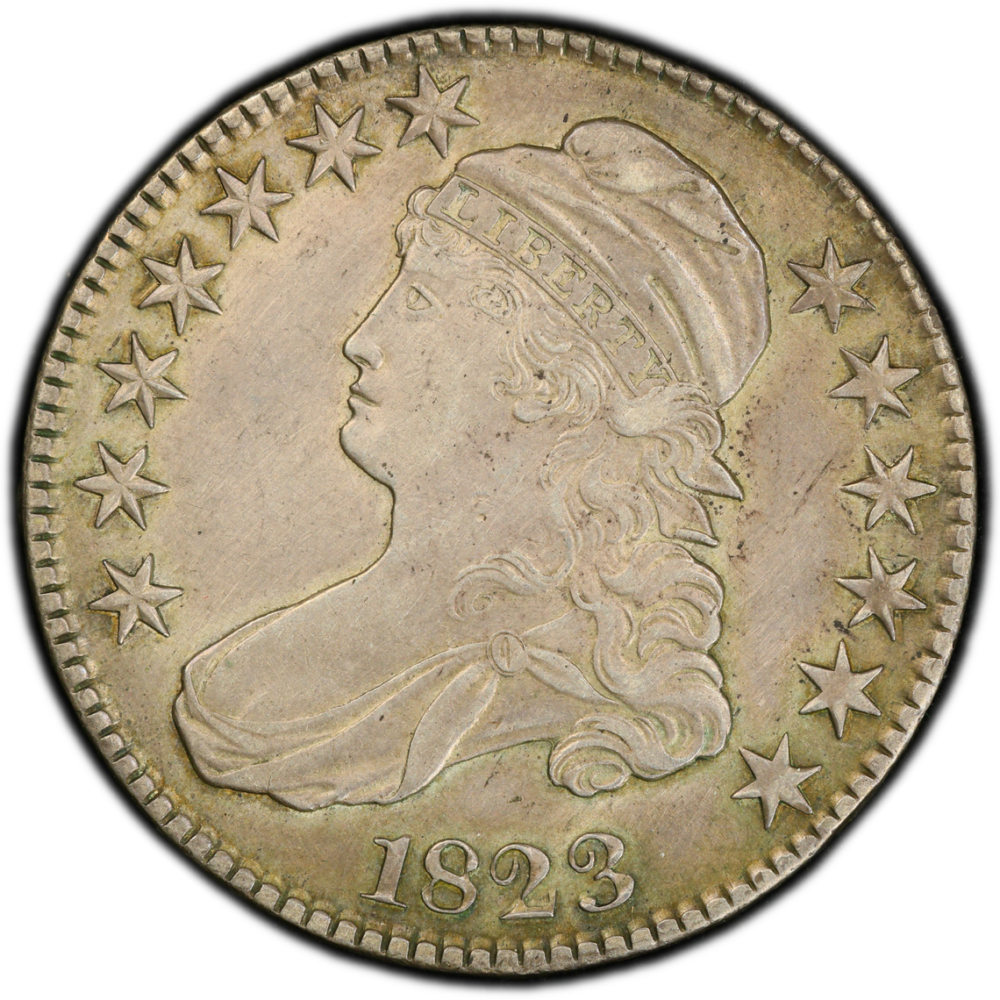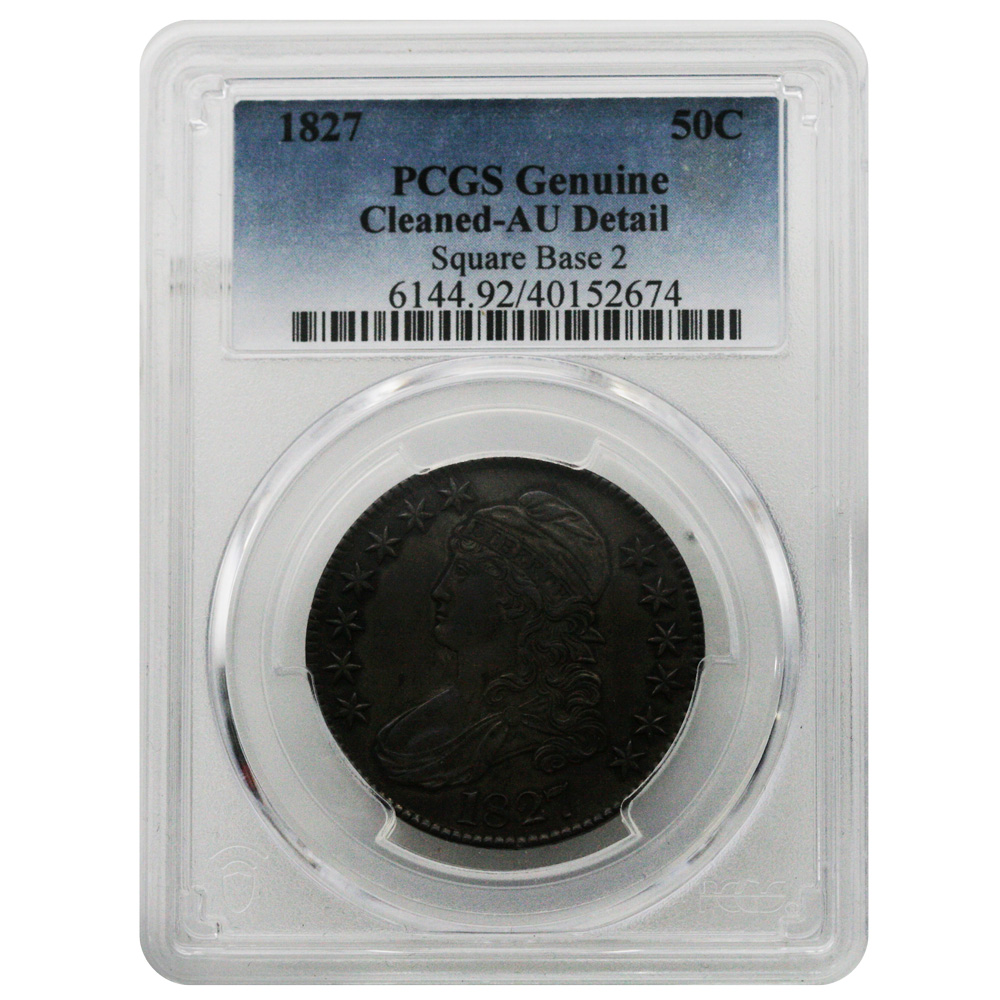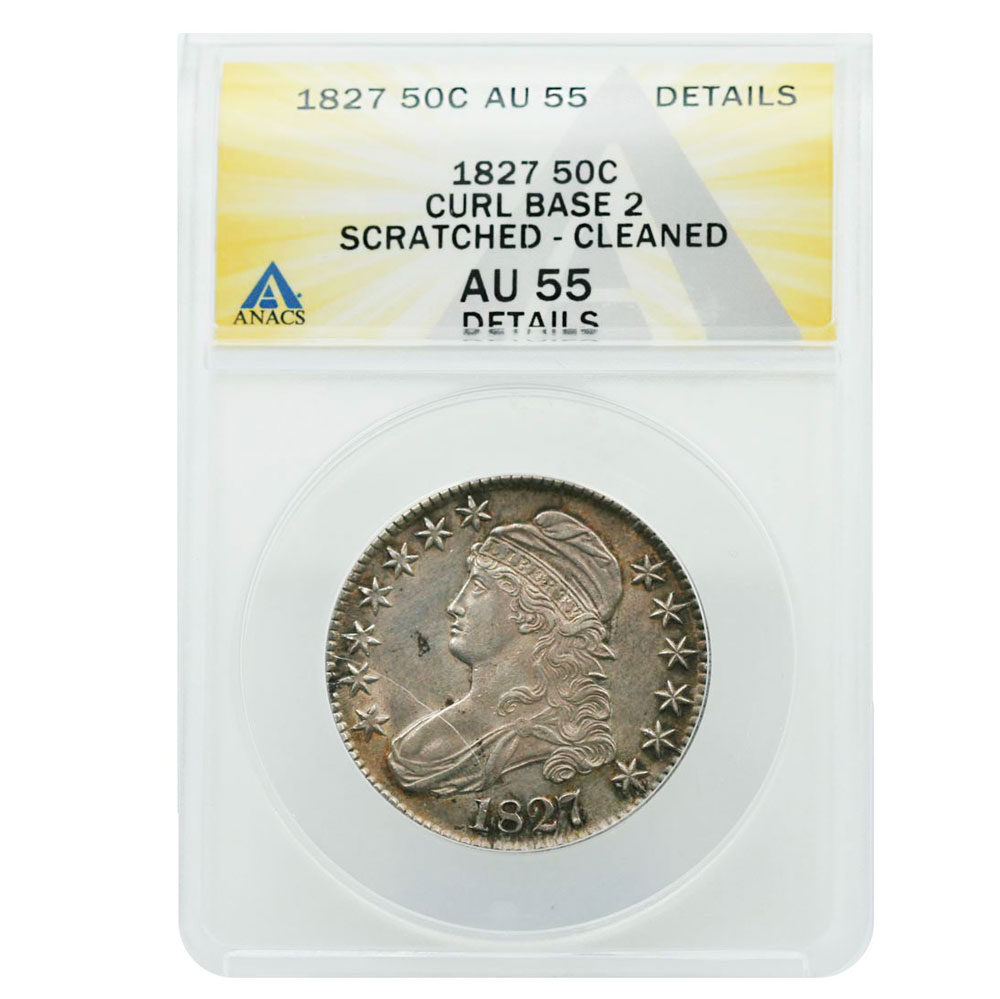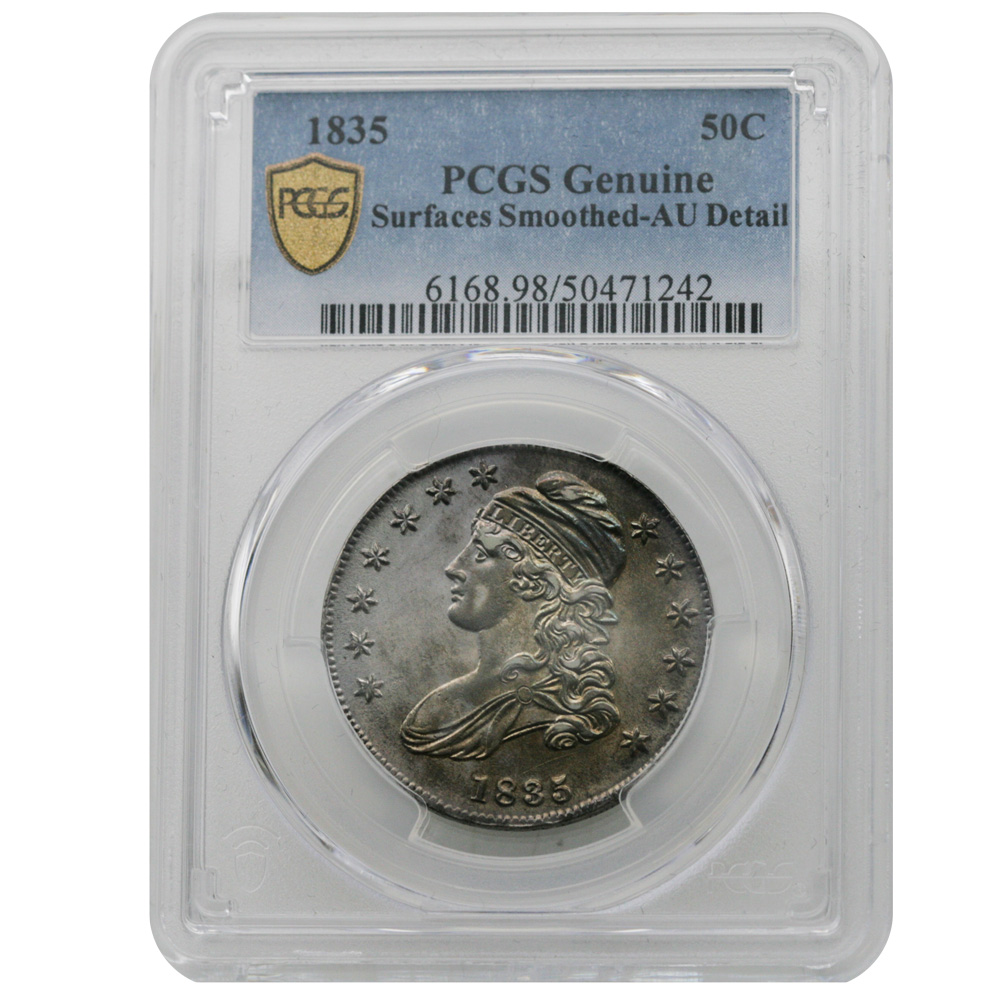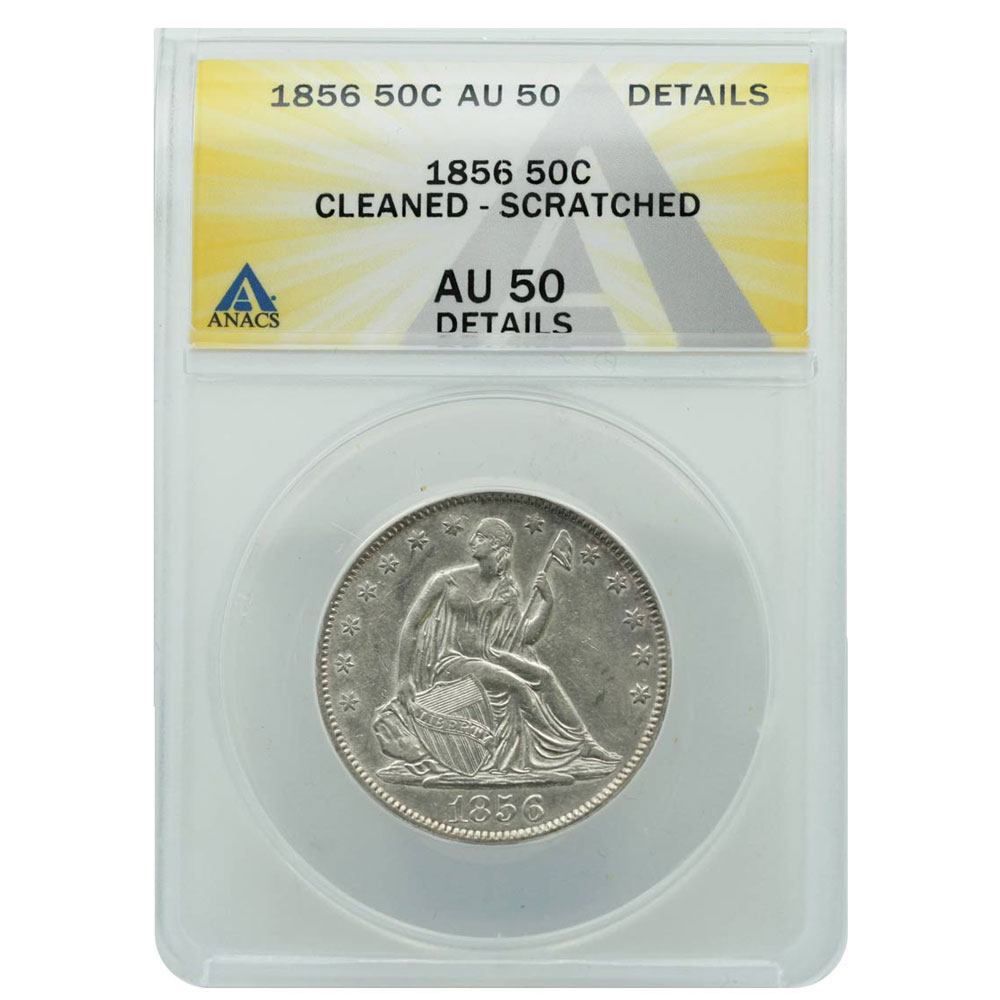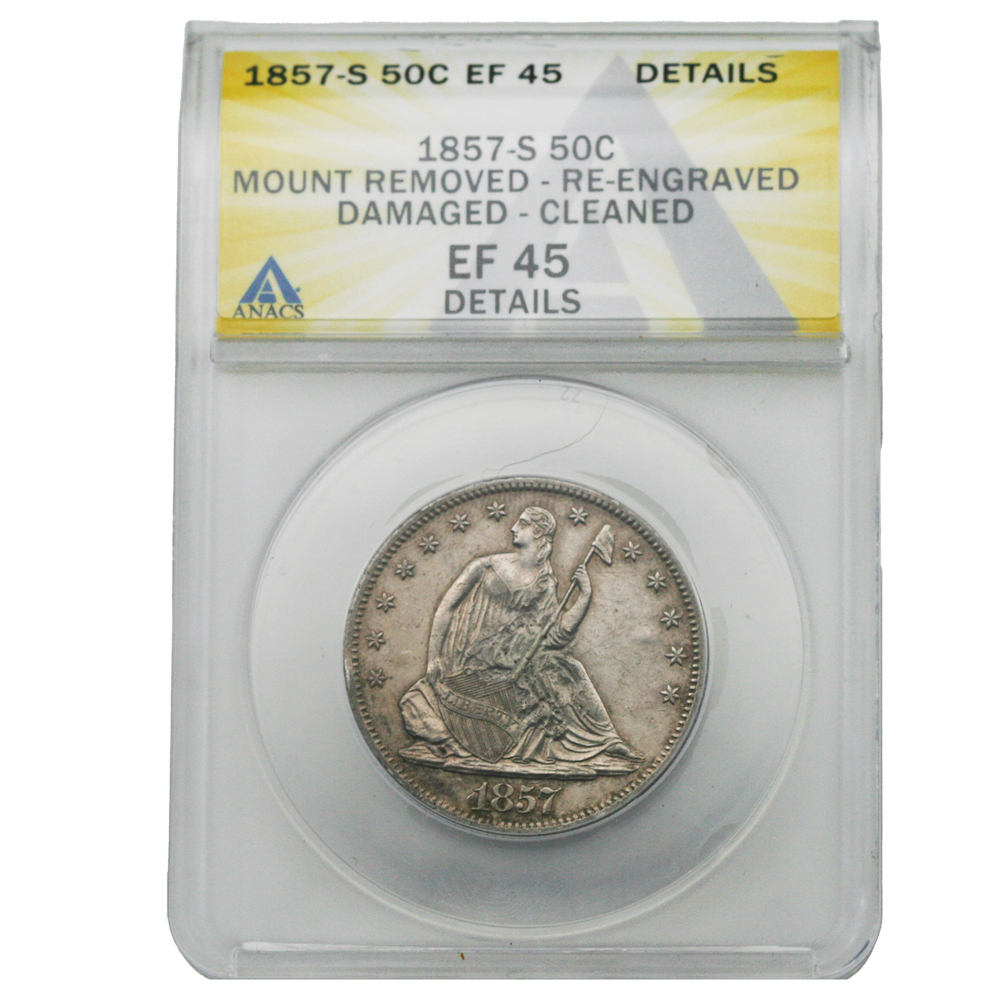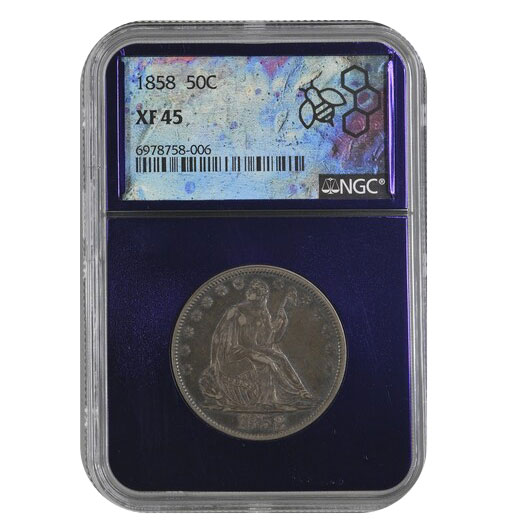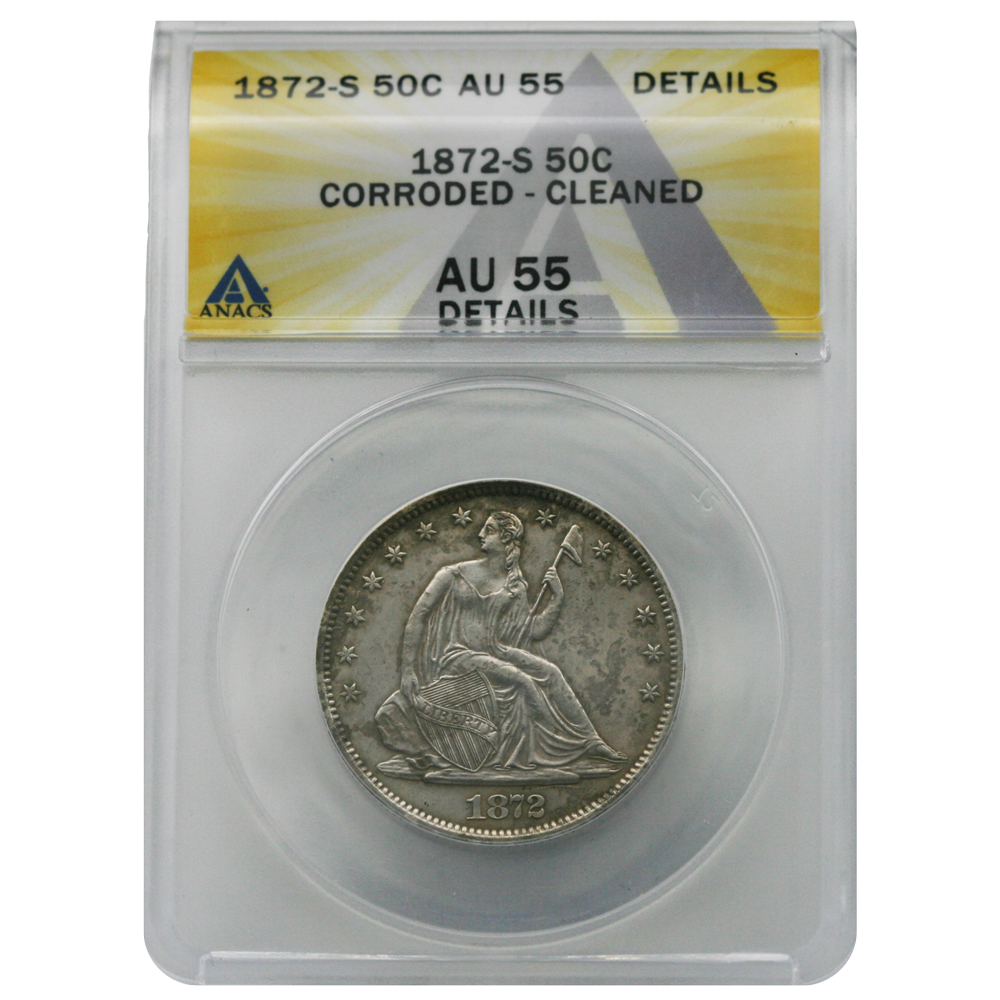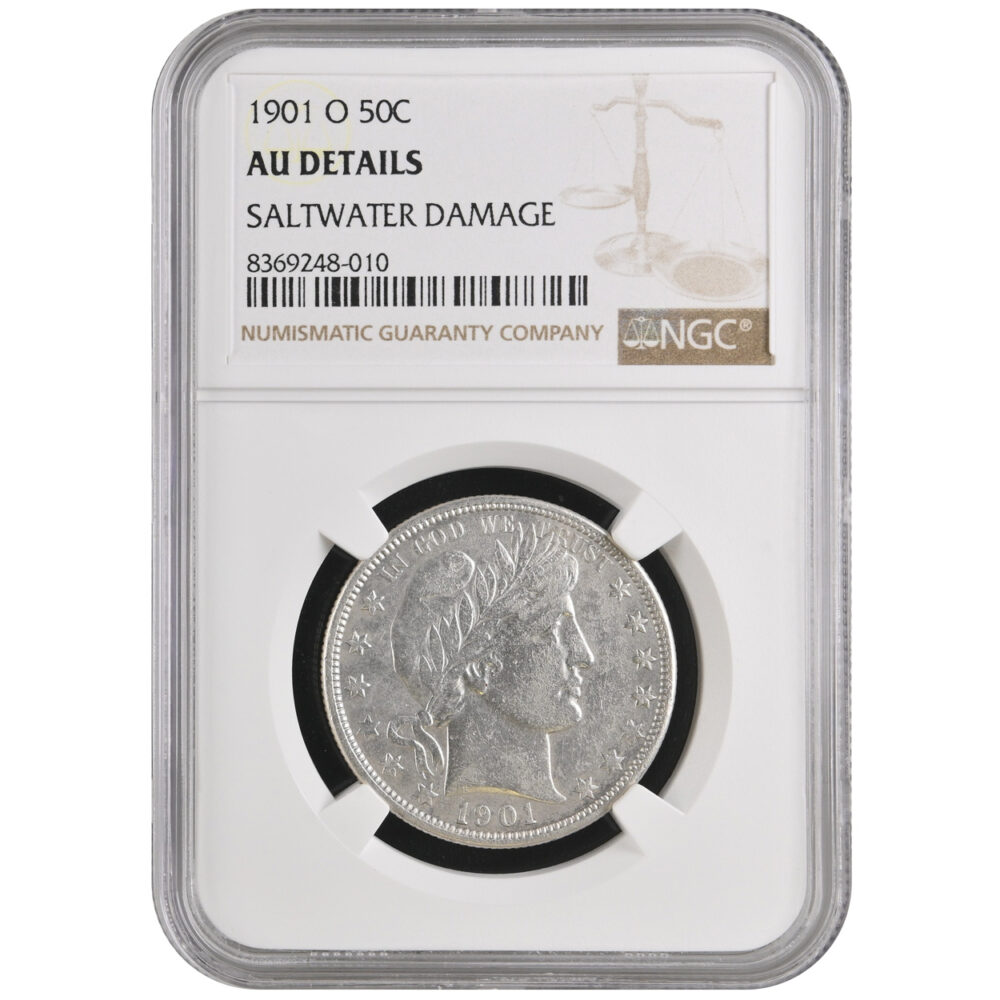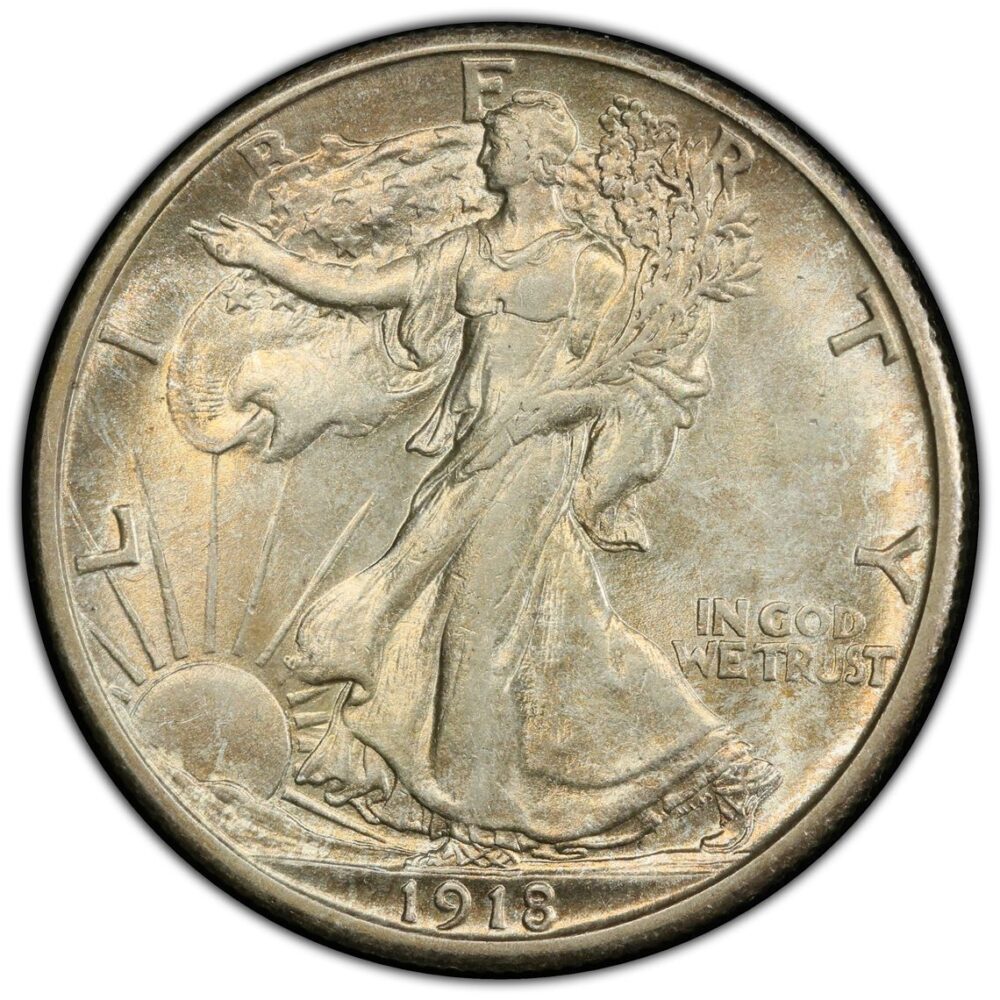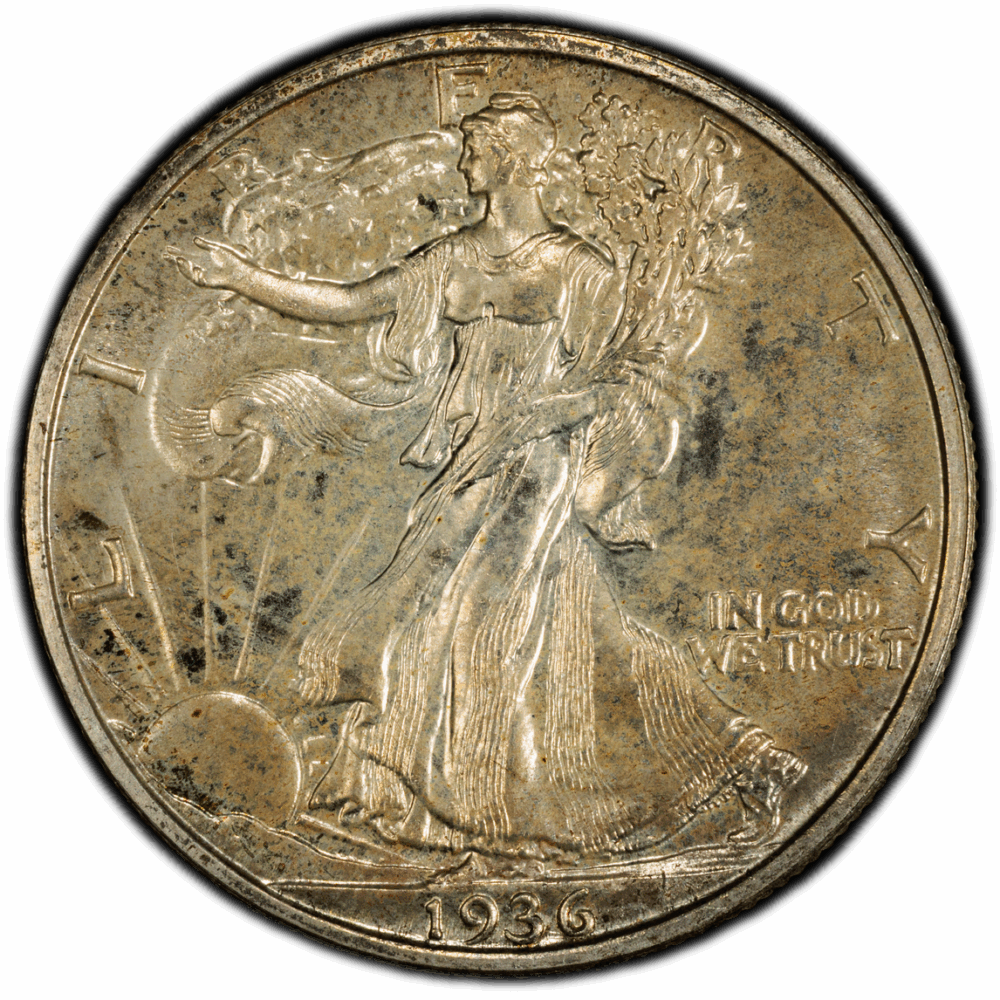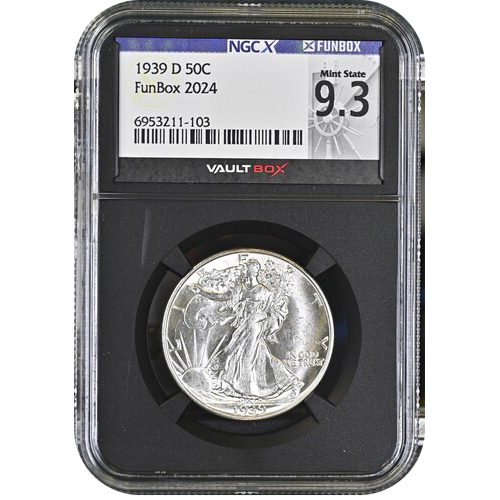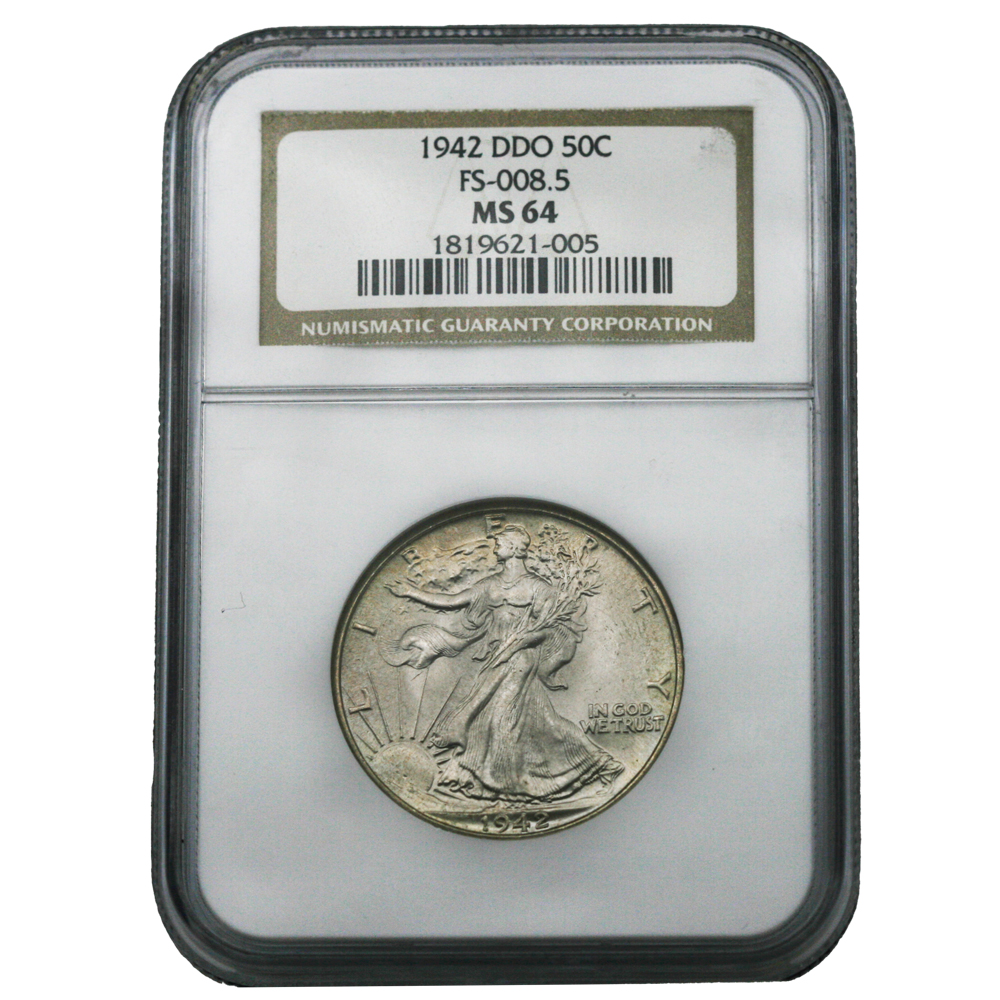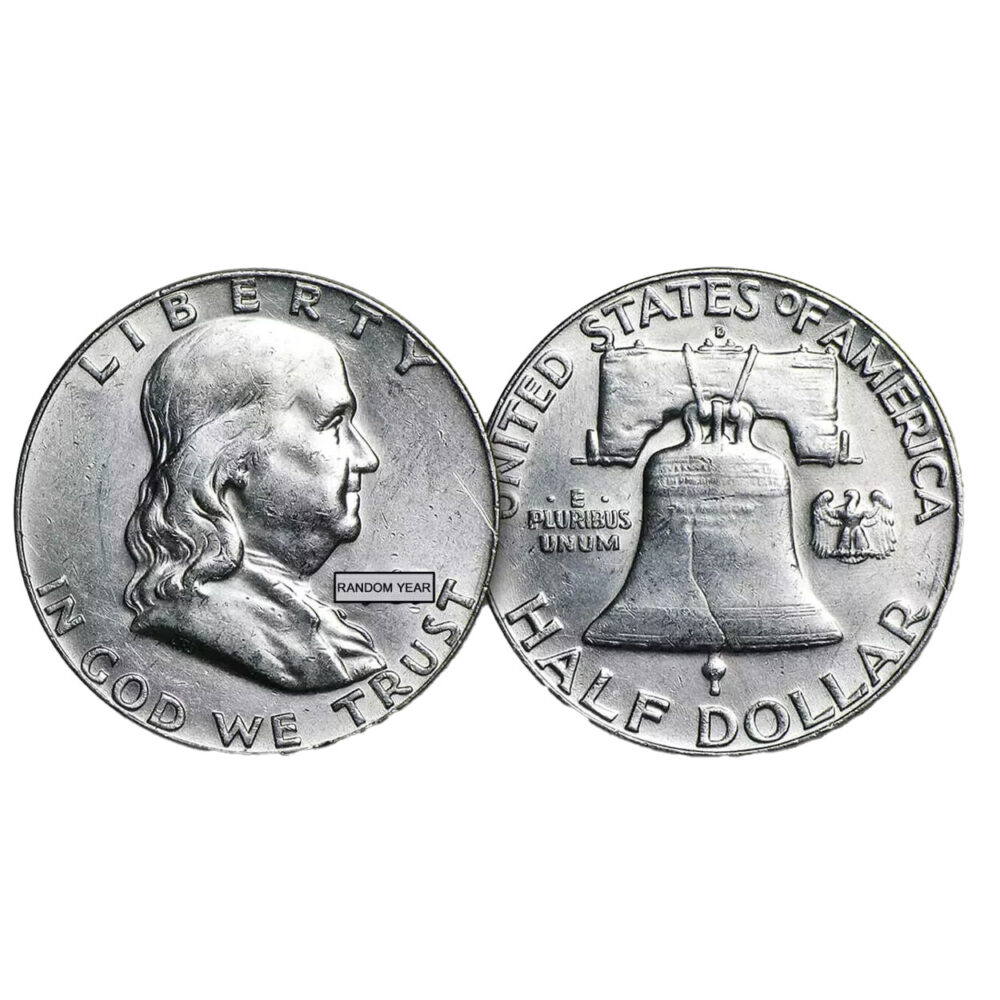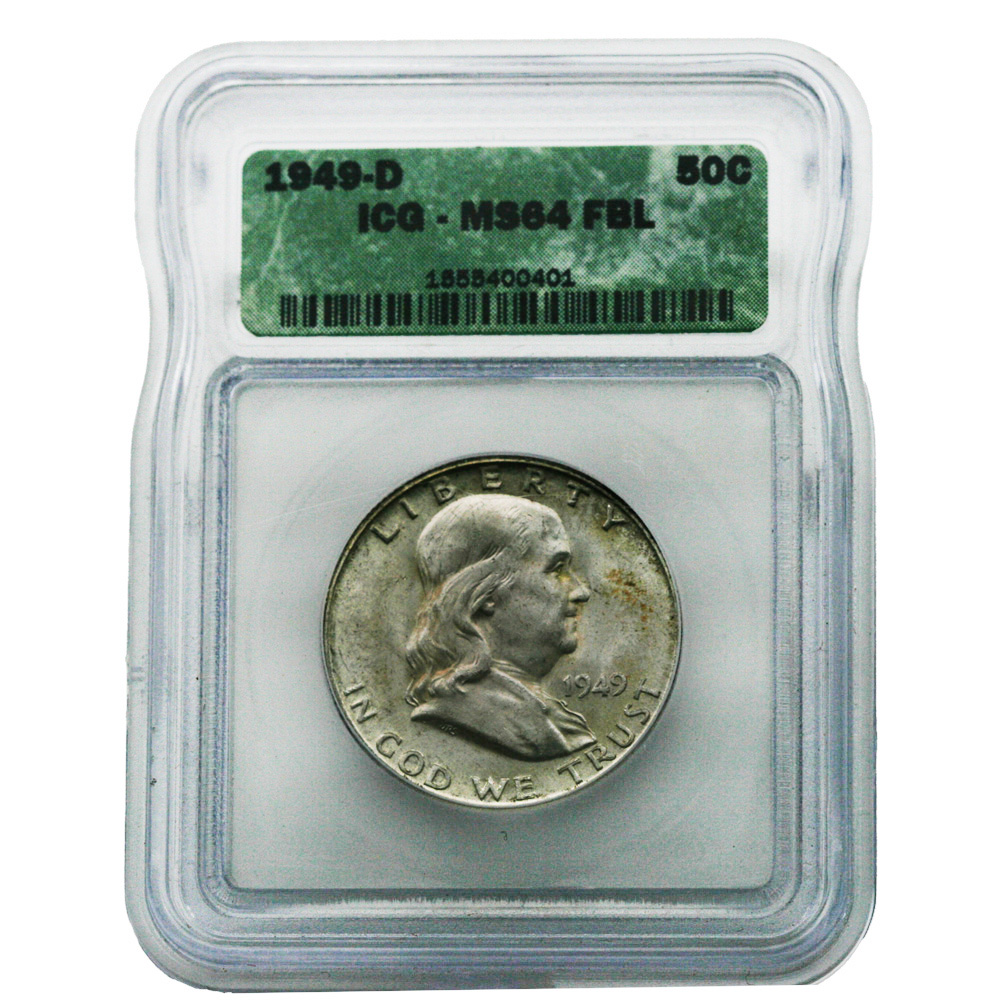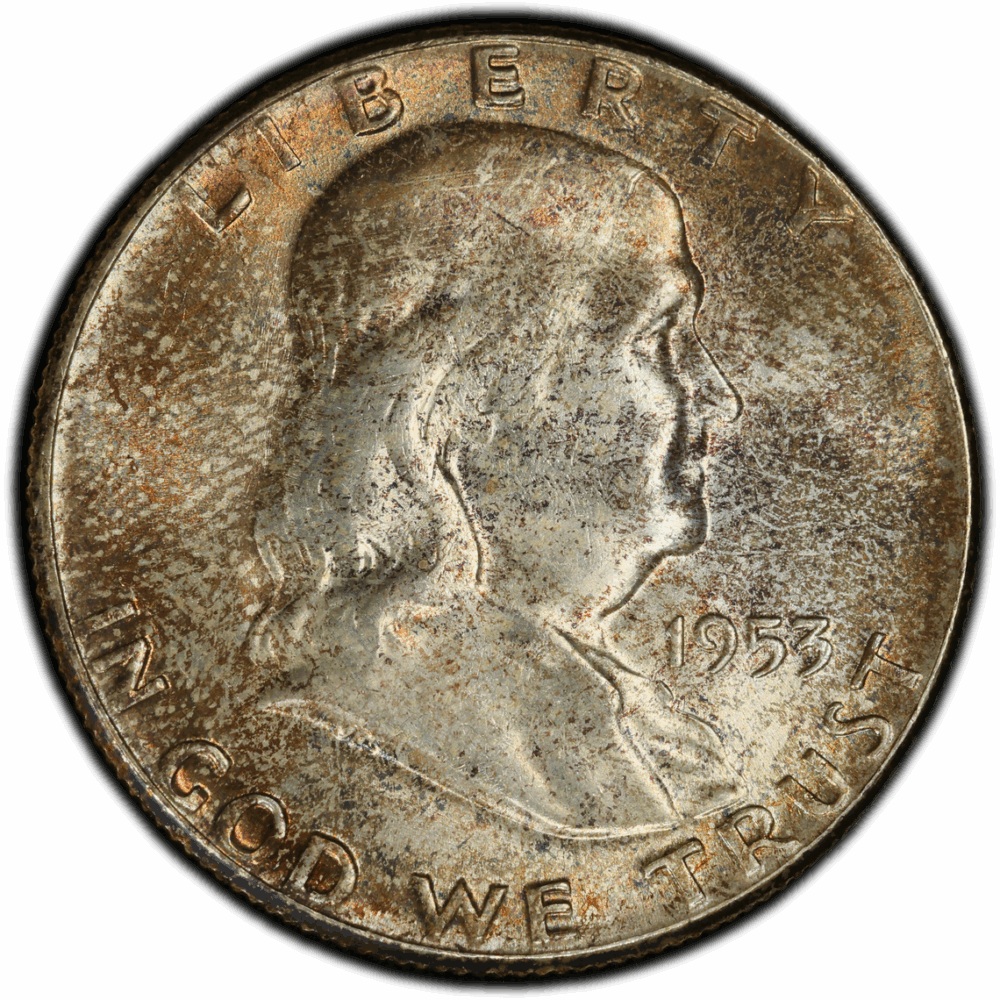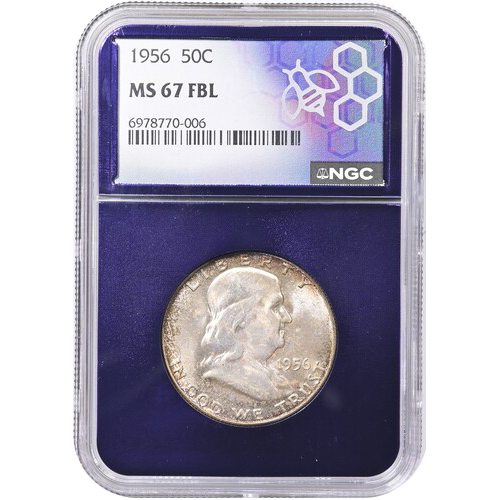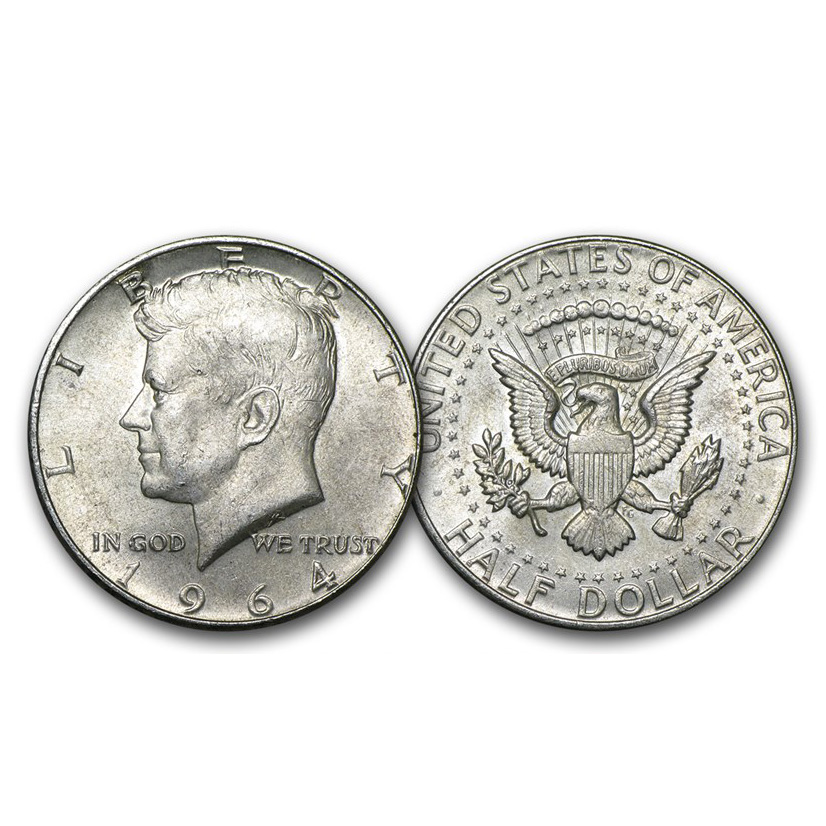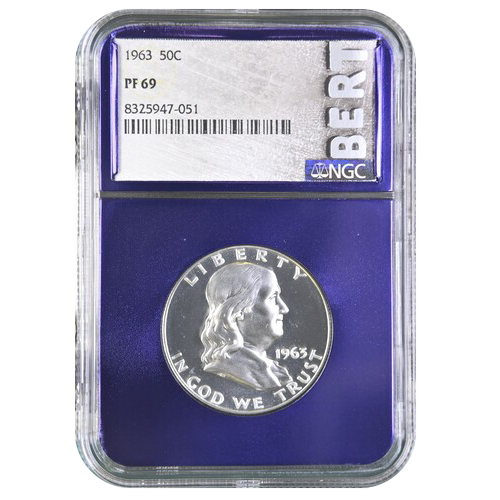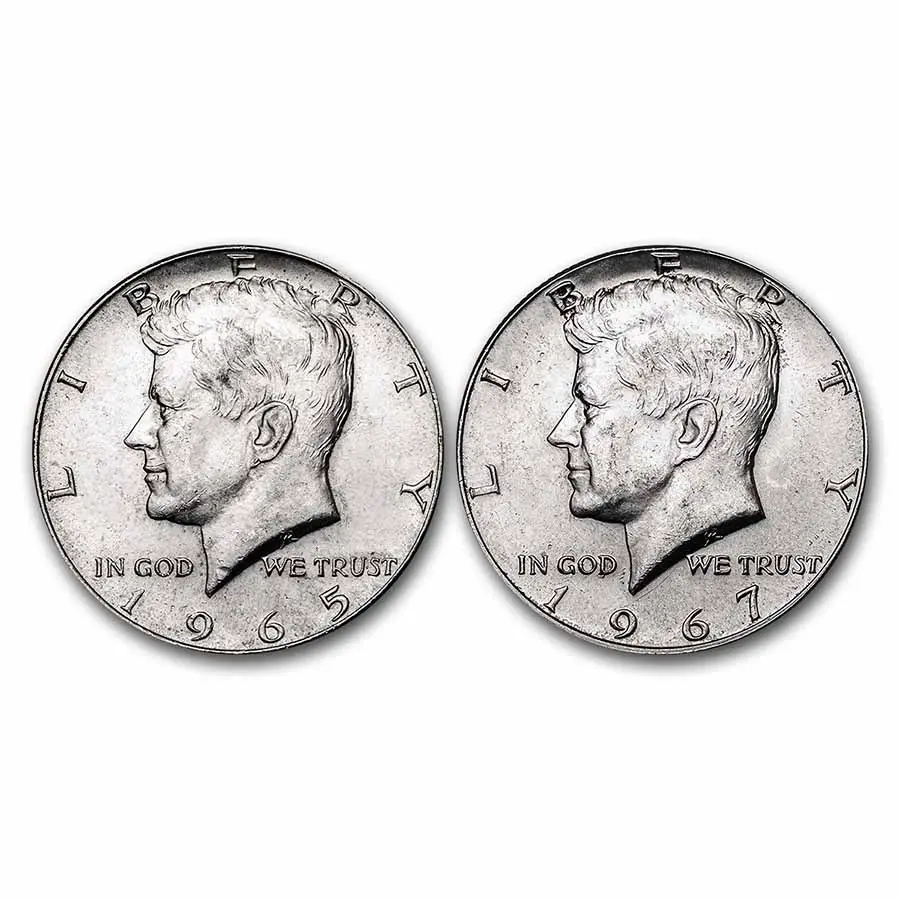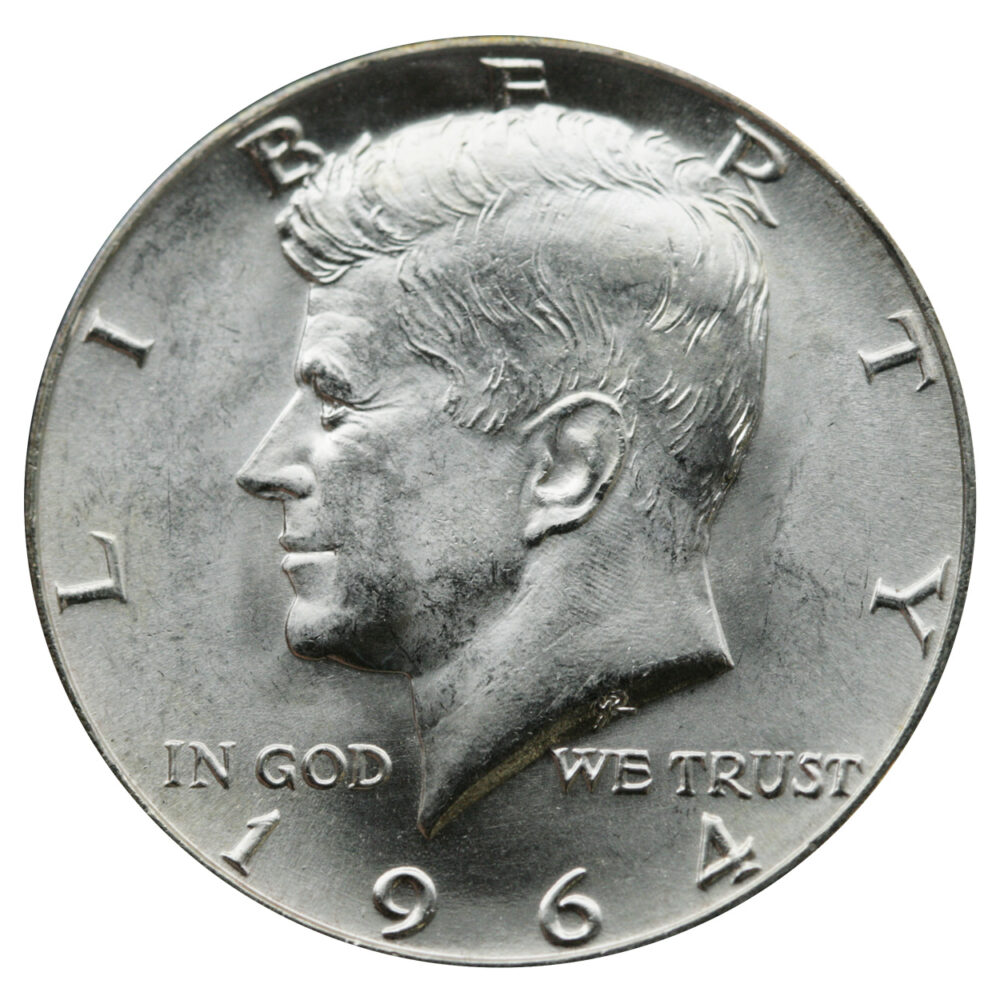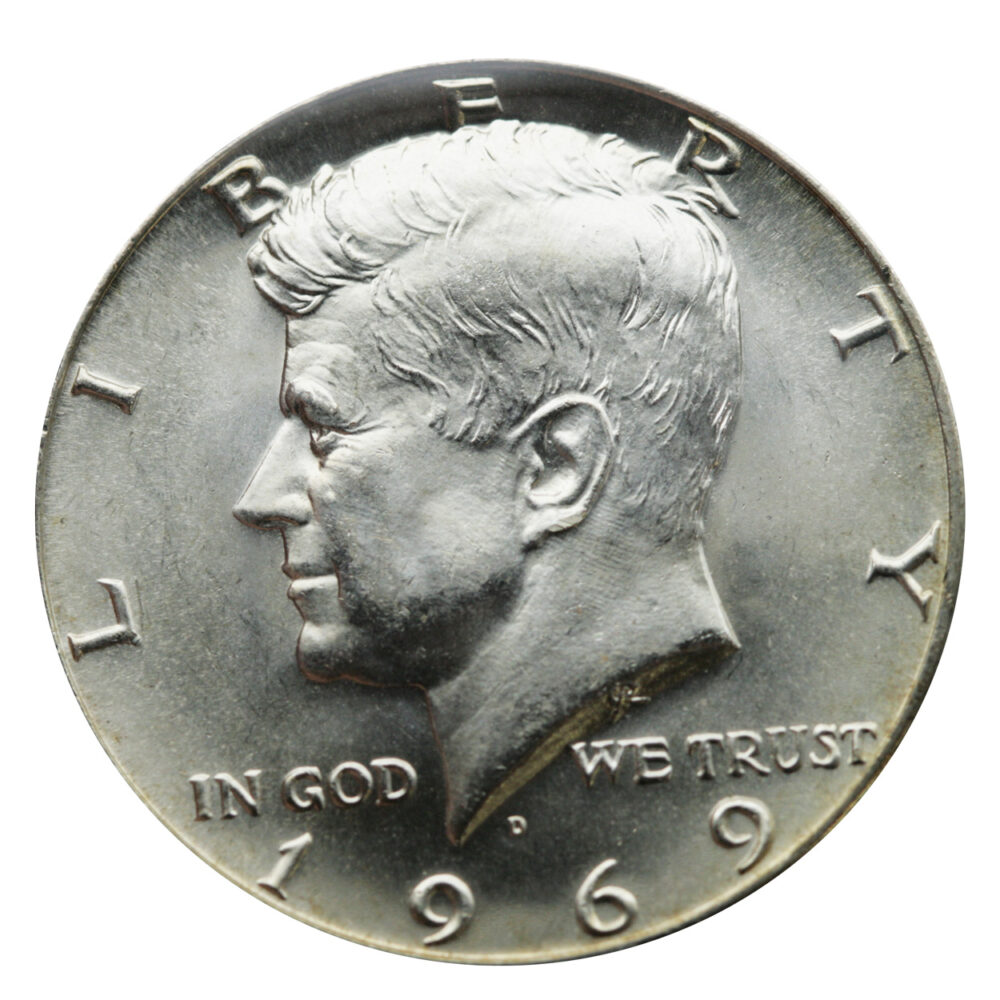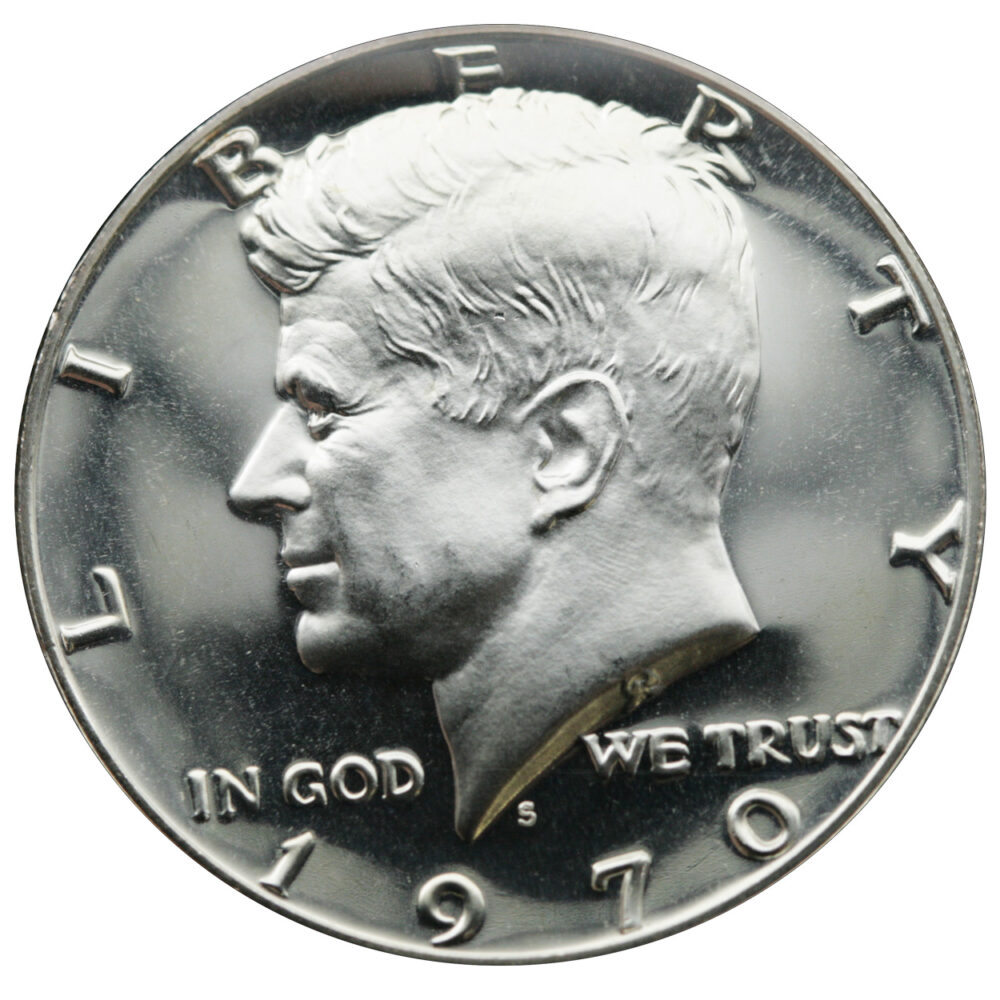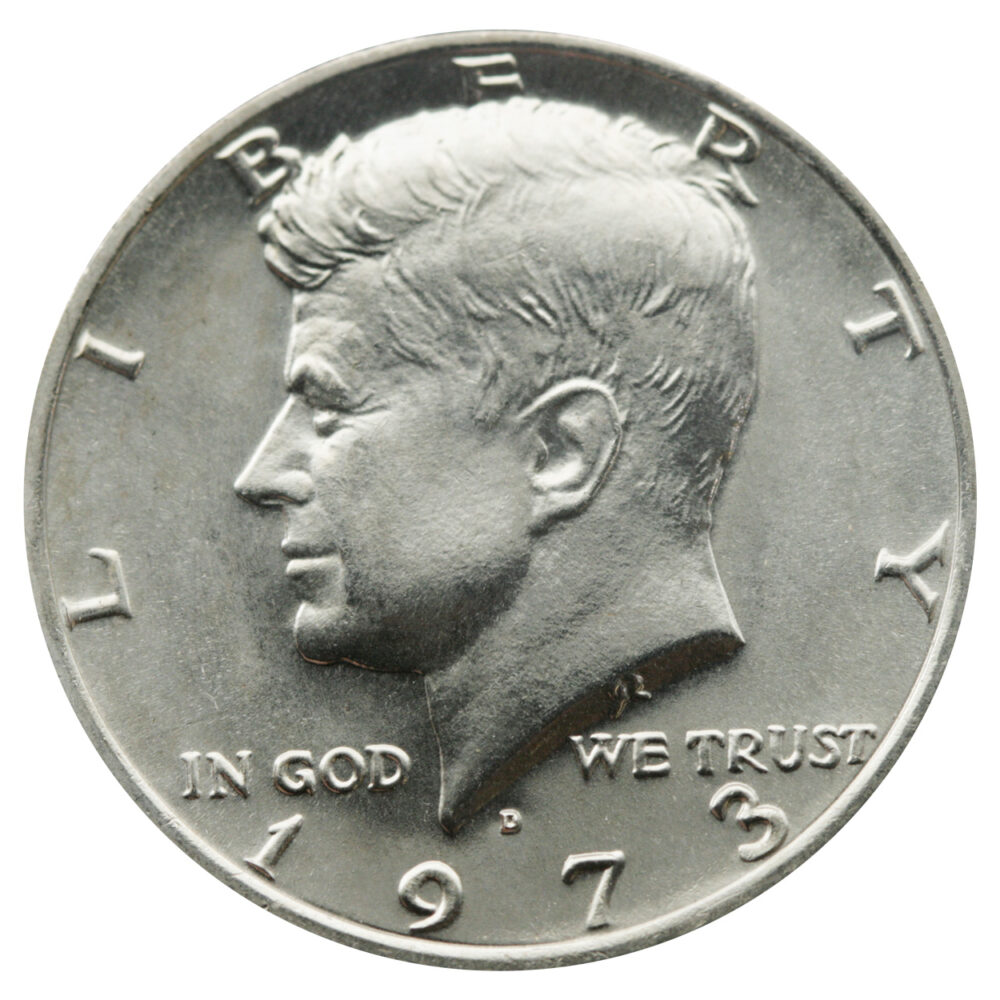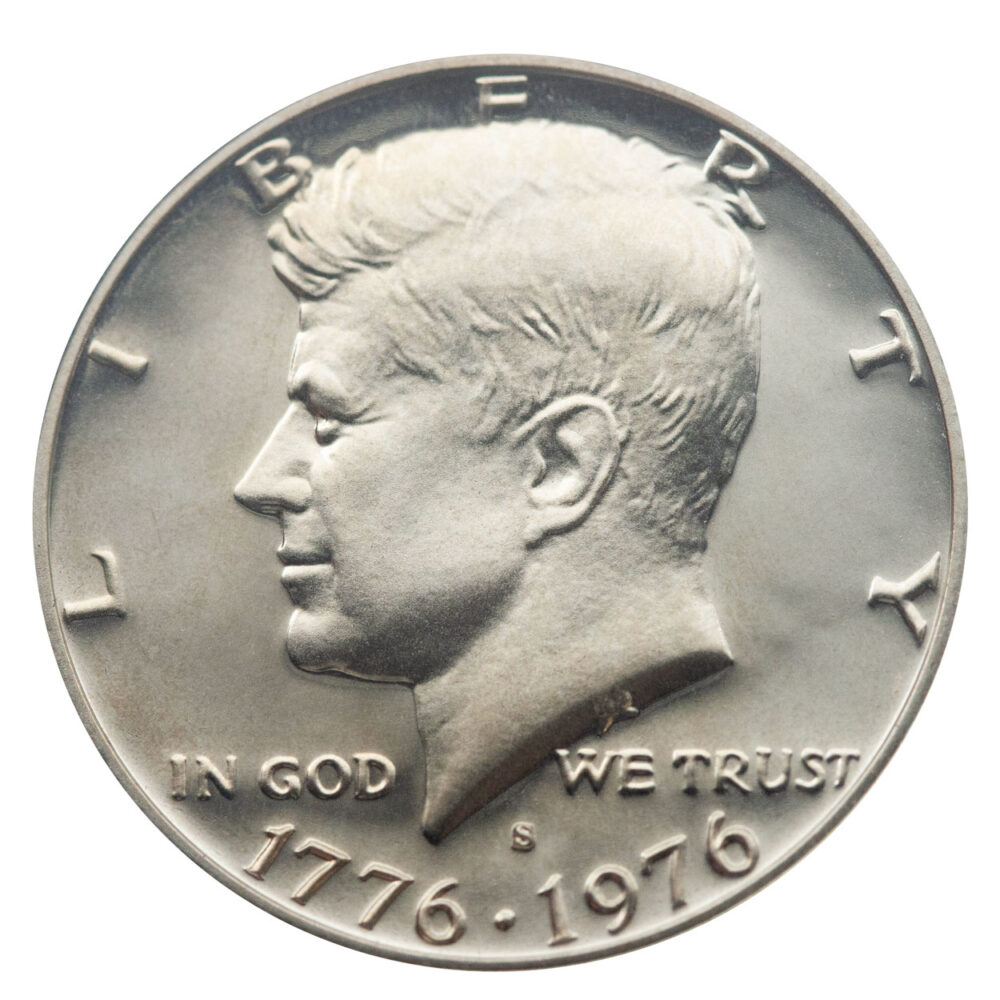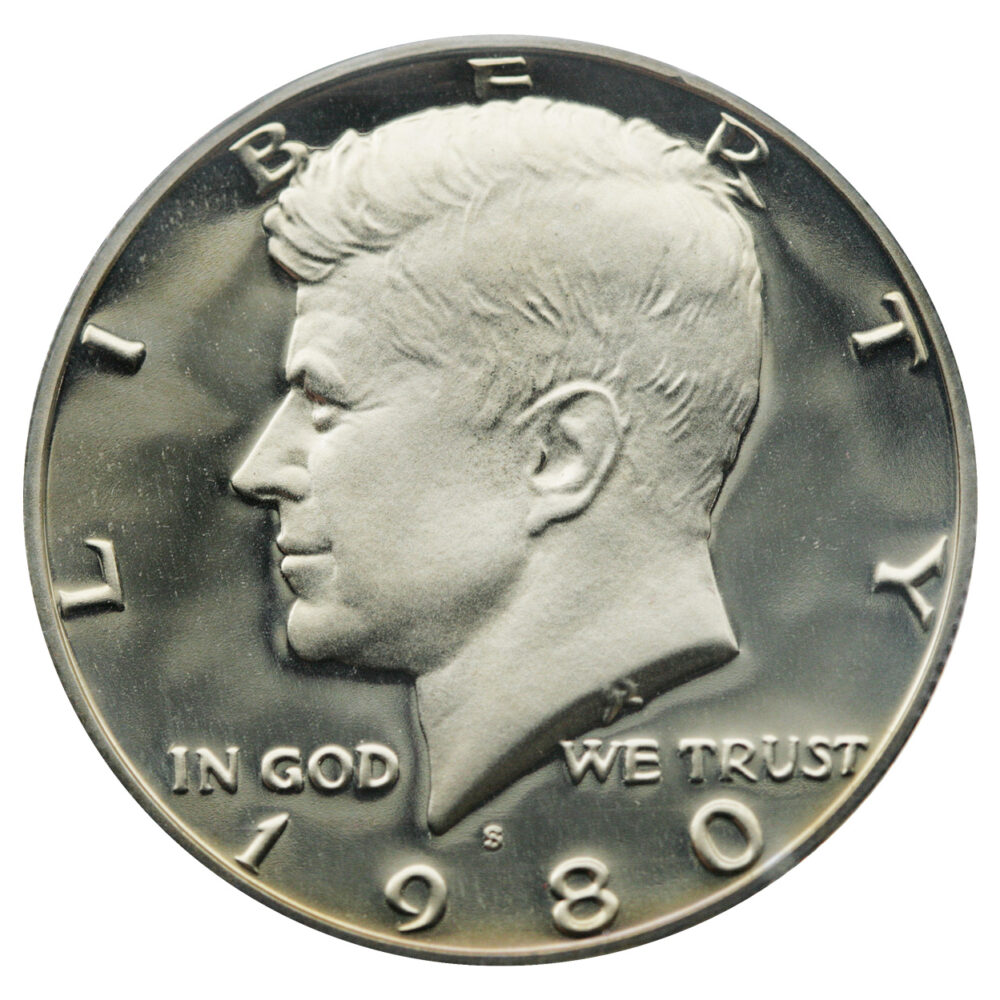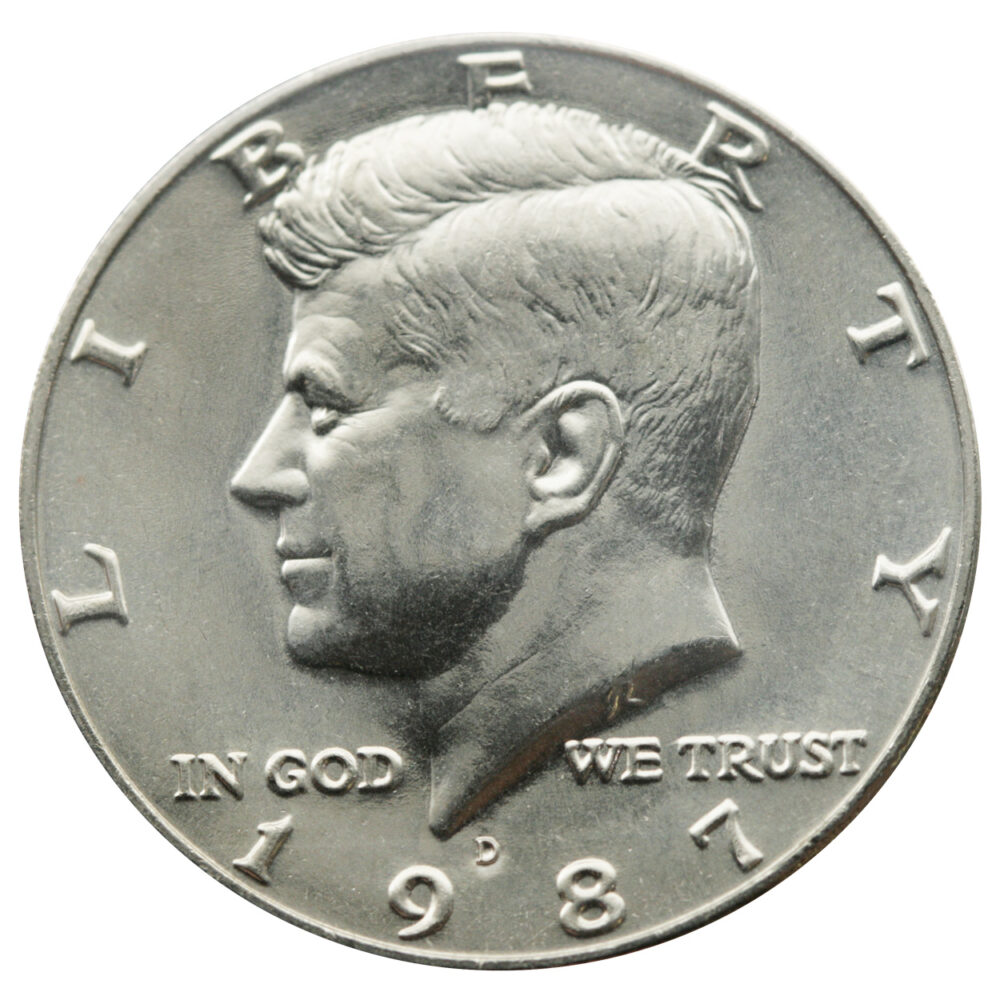Half Dollars (1794-Date)
Flowing Hair Half Dollars (1794–1795)
The Flowing Hair Half Dollar was the very first half dollar struck by the U.S. Mint, designed by Robert Scot. Liberty is shown with long, flowing hair, while the reverse features a small eagle inside a wreath. With mintages under 25,000, these coins are among the scarcest federal issues, making them highly prized today. Their short production span makes them a cornerstone rarity in early American coinage. Here
Draped Bust Half Dollars (1796–1807)
Introduced in 1796, the Draped Bust Half Dollar refined Liberty’s portrait, based on a sketch by Gilbert Stuart. The earliest issues (1796–1797) featured the Small Eagle reverse, struck in extremely low numbers, and are considered major rarities. From 1798 onward, the reverse changed to the Heraldic Eagle, modeled after the Great Seal of the United States, bringing a more formal national symbol to the coin. This design remained in use until 1807 and is popular with collectors for its early artistry and scarcity. Here
Capped Bust Half Dollars (1807–1839)
The Capped Bust design by John Reich replaced the Draped Bust in 1807, showing Liberty with a cap and a powerful eagle on the reverse. Early pieces had lettered edges (1807–1836), a hallmark of early minting technology, while later issues (1836–1839) introduced reeded edges with steam-powered presses. This series is famous for its many die varieties, cataloged extensively in the Overton reference, making it a favorite among specialists. Key rarities like the 1815/2 overdate add challenge and prestige for advanced collectors. Here
Liberty Seated Half Dollars (1839–1891)
Christian Gobrecht’s Liberty Seated design lasted more than fifty years, one of the longest-running coin designs in U.S. history. Liberty appears seated with a shield and liberty pole, while the reverse depicts an eagle. Over time, the design went through multiple subtypes, including “No Motto” (1839–1866), “With Motto” (1866–1891), and short-lived variations such as the 1853 Arrows and Rays and the 1873–74 Arrows issues, reflecting weight changes. The 1878 proof-only issue and scarce Carson City (CC) mint issues are highlights for collectors. Here
Barber Half Dollars (1892–1915)
Named after designer Charles E. Barber, the Barber Half Dollar features a classical Liberty portrait wearing a laurel wreath. The reverse continues the heraldic eagle theme, balancing tradition with durability for circulation. Though mintages were higher than earlier series, most Barber halves circulated heavily, leaving relatively few in high grade. Keys include the 1892-O Micro O, 1896-S, 1913, and 1914, all of which are rare in any condition. Here
Walking Liberty Half Dollars (1916–1947)
Adolph A. Weinman’s Walking Liberty design is celebrated as one of the most beautiful U.S. coins ever struck. Liberty strides toward the dawn of a new day, draped in the flag, while the reverse shows a strong eagle on a rock with wings partly spread. Circulation was heavy during the World Wars and Depression, so high-grade survivors are tough. Key dates include the 1919-D and 1919-S, the 1921 issues (especially 1921-S), and the 1938-D, making the series both artistic and challenging. Here
Franklin Half Dollars (1948–1963)
The Franklin Half Dollar, designed by John R. Sinnock, features Benjamin Franklin on the obverse and the Liberty Bell on the reverse, with a small eagle added by law. Its short lifespan makes it one of the easiest half dollar series to complete, though high-grade coins with strong Full Bell Lines (FBL) are prized. The 1955 business strike and varieties like the 1953-S FBL are key highlights. The series ended abruptly in 1963, replaced by the Kennedy Half Dollar after JFK’s assassination. Here
Kennedy Half Dollars (1964–Present)
The Kennedy Half Dollar debuted in 1964 as a tribute to President John F. Kennedy, with the first year struck in 90% silver. From 1965–1970, the composition was reduced to 40% silver, before transitioning to copper-nickel clad for circulation, though silver proofs and collector issues continue to be produced. Collectors chase the 1964 Accented Hair Proof, the 1970-D (a Mint Set exclusive), the 1998-S Matte Proof, and the special 2014 50th Anniversary editions. While no longer widely seen in circulation, Kennedy halves remain a staple of U.S. coin collecting. Here




